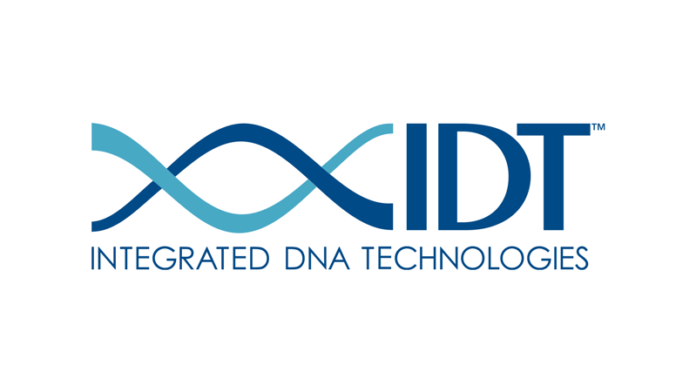CORALVILLE, Iowa– Global genomics solutions provider Integrated DNA Technologies (IDT) is empowering researchers to drive scientific discoveries in gene editing with the release of Alt-R HDR Donor Blocks, an improved solution for increasing homology-directed repair (HDR) rates in large fragment knock-in experiments. IDT’s Alt-R HDR Donor Blocks incorporate advanced chemical modifications to boost the HDR rates of large genomic changes and insertions, and significantly reduce the occurrence of non-homologous (blunt) integration of the donor sequence.
“It is well established that a key challenge in precise genome editing research is the low efficiency of HDR rates, and our new solution is singularly focused on helping researchers make HDR experiments more efficient and more likely to succeed,” said Mark Behlke, IDT’s Chief Scientific Officer. “Alt-R HDR Donor Blocks are the latest examples of products resulting from extensive wet-bench research conducted by IDT’s R&D scientists. We hope this new product can help increase research yields for the scientific community and serve as a gateway to repairing disease-causing mutations, altering genomes, and enabling more discoveries.”
In a study, IDT investigated the impact on HDR efficiencies when inserting a green florescent protein tag using long, single-stranded DNA (ssDNA) or double-stranded DNA (dsDNA) templates. The outcomes demonstrated that the use of Alt-R HDR Donor Blocks resulted in the highest HDR rates compared to unmodified dsDNA or long ssDNA. The ability of Alt-R Donor Blocks to reduce the occurrence of unwanted off-target integrations was also investigated. In addition, results showed a 65% reduction in blunt insertions at a mock off-target double-strand break compared to unmodified dsDNA. When combined with IDT’s Alt-R HDR Enhancer v2, modified Alt-R Donor Blocks exhibited the highest HDR rates at multiple genomic loci and in multiple cell lines tested, and reduced the off-target integration, lowering blunt insertion levels to 1%.
Ann Morris, PhD, an associate professor at the University of Kentucky, added, “We worked with IDT on a project to generate knock-in zebrafish carrying an in-frame epitope tag in our gene of interest. In-frame knock-ins are notoriously difficult to obtain in zebrafish, but IDT helped us design several candidate donor templates with various modifications to determine which one would work best. The IDT Alt-R HDR Design Tool was easy to work with, and we were able to rapidly test several permutations of HDR donor blocks to successfully obtain our desired knock-in line. IDT staff gave us a lot of helpful advice, and were readily available throughout the process to answer our questions and get feedback on what worked best. We will definitely work with them again on our next knock-in project.”


